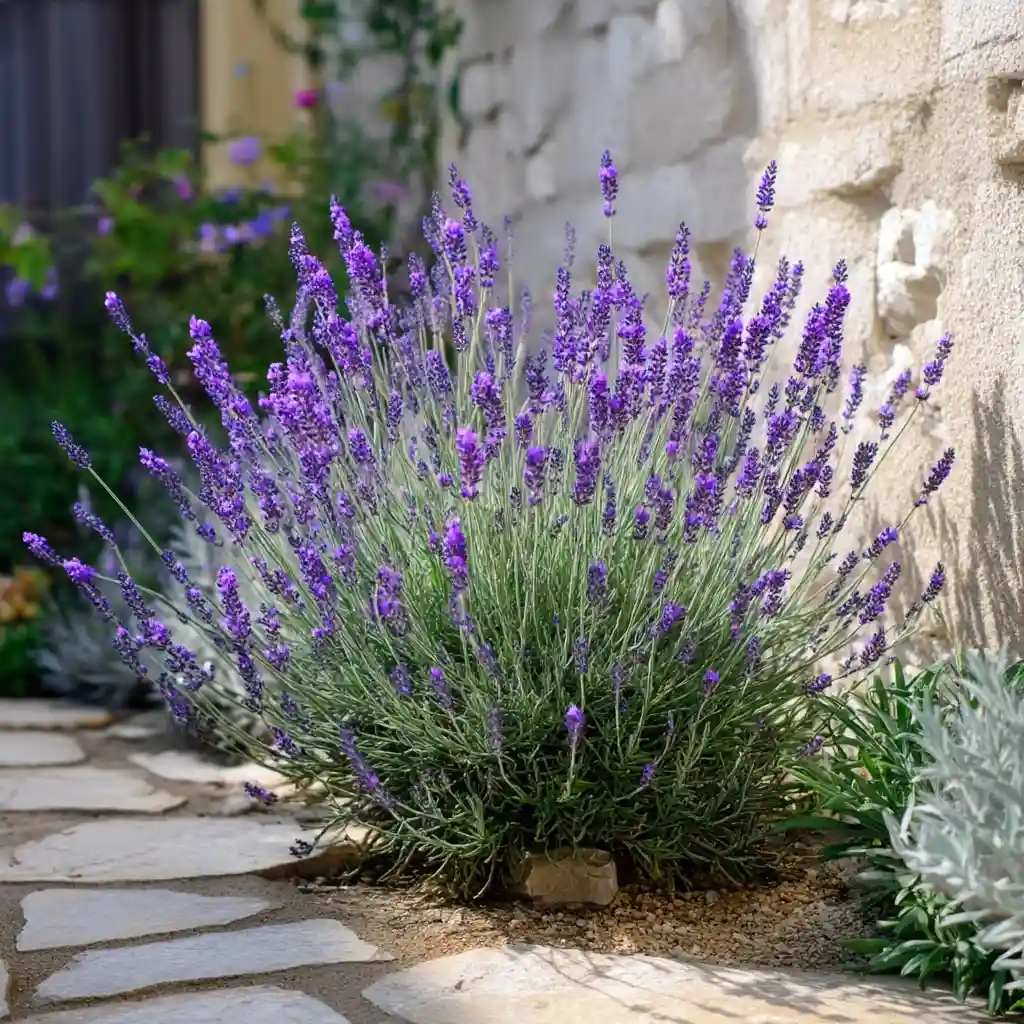Mosquito repellent plants are more than just a pretty addition to your garden — they’re a natural, chemical-free way to keep those pesky bloodsuckers at bay. Many of these plants contain essential oils and aromatic compounds that mosquitoes find irritating, making them excellent companions for outdoor living spaces. Whether you’re working with a spacious backyard or a few pots on a patio, incorporating these plants can help reduce your reliance on sprays while creating a fragrant, pollinator-friendly environment.
In this guide, we’ll walk through 12 proven mosquito repellent plants, each offering its own unique blend of scent, beauty, and bug-banishing benefits. From culinary herbs to ornamental flowers, you’ll find options that suit both your gardening style and climate zone.
Table of Contents
1. Lavender
Lavender is one of the most beloved mosquito repellent plants, thanks to its soothing scent and stunning purple blooms. But while humans enjoy its calming aroma, mosquitoes can’t stand it. The plant’s essential oils—especially linalool and linalyl acetate—interfere with a mosquito’s ability to smell, making lavender a powerful natural deterrent.
This drought-tolerant perennial thrives in full sun and well-drained soil, making it a low-maintenance choice for borders, raised beds, or container gardens. Once established, it requires very little water and can handle heat with ease.
Lavender isn’t just good for repelling mosquitoes. It also attracts pollinators like bees and butterflies, while resisting deer and rabbits. For best results, plant it near outdoor seating areas or entryways to enjoy both its beauty and its bug-repelling benefits.
2. Marigold

Marigold is a vibrant, easy-to-grow annual that doubles as one of the most effective mosquito repellent plants. Its distinct scent—produced by compounds like pyrethrum—acts as a natural insecticide that mosquitoes dislike. You’ll often find marigolds planted around vegetable gardens for this very reason.
These sun-loving flowers thrive in containers, window boxes, and garden borders. Planting them near doorways, patios, or other outdoor gathering spots can create a natural mosquito barrier. Plus, their bright yellow and orange blooms add cheerful color all season long.
Beyond mosquitoes, marigolds also deter other pests such as aphids, whiteflies, and squash bugs. They’re low-maintenance, bloom from late spring until frost, and make a practical and decorative addition to any pest-conscious garden design.
3. Citronella Grass (Lemongrass)
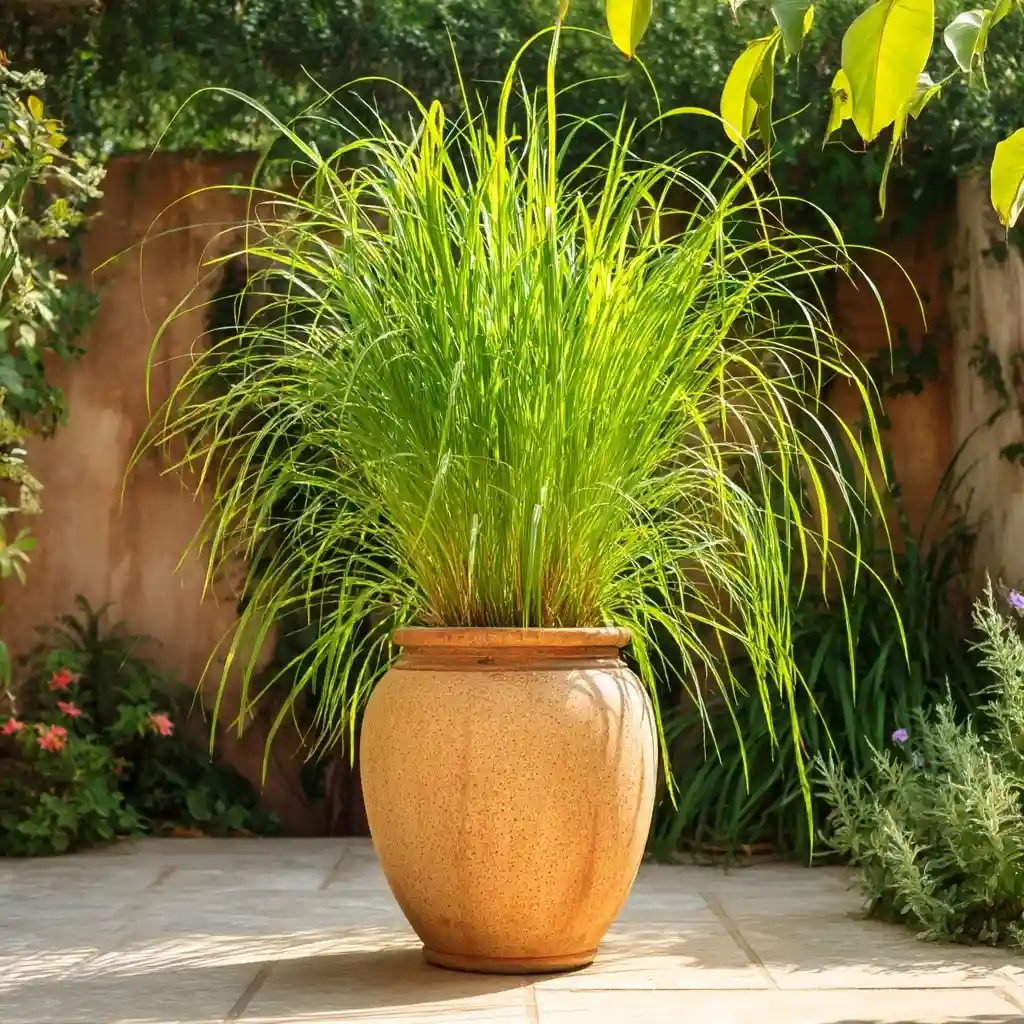
When most people think of natural mosquito control, citronella grass is usually the first thing that comes to mind—and for good reason. This tall, tropical grass is rich in citronellal, the active ingredient used in many mosquito repellents. As a live plant, it’s even more effective than candles or sprays, making it a must-have among mosquito repellent plants.
Citronella grass thrives in full sun and warm climates, typically in USDA Zones 9–11. In cooler regions, it’s best grown in large pots that can be moved indoors during winter. It prefers well-draining soil and regular watering during the growing season.
With its fountain-like growth and lemony scent, citronella grass adds texture and movement to your garden. Place it near sitting areas or doorways to help keep mosquitoes away where it matters most.
4. Catmint
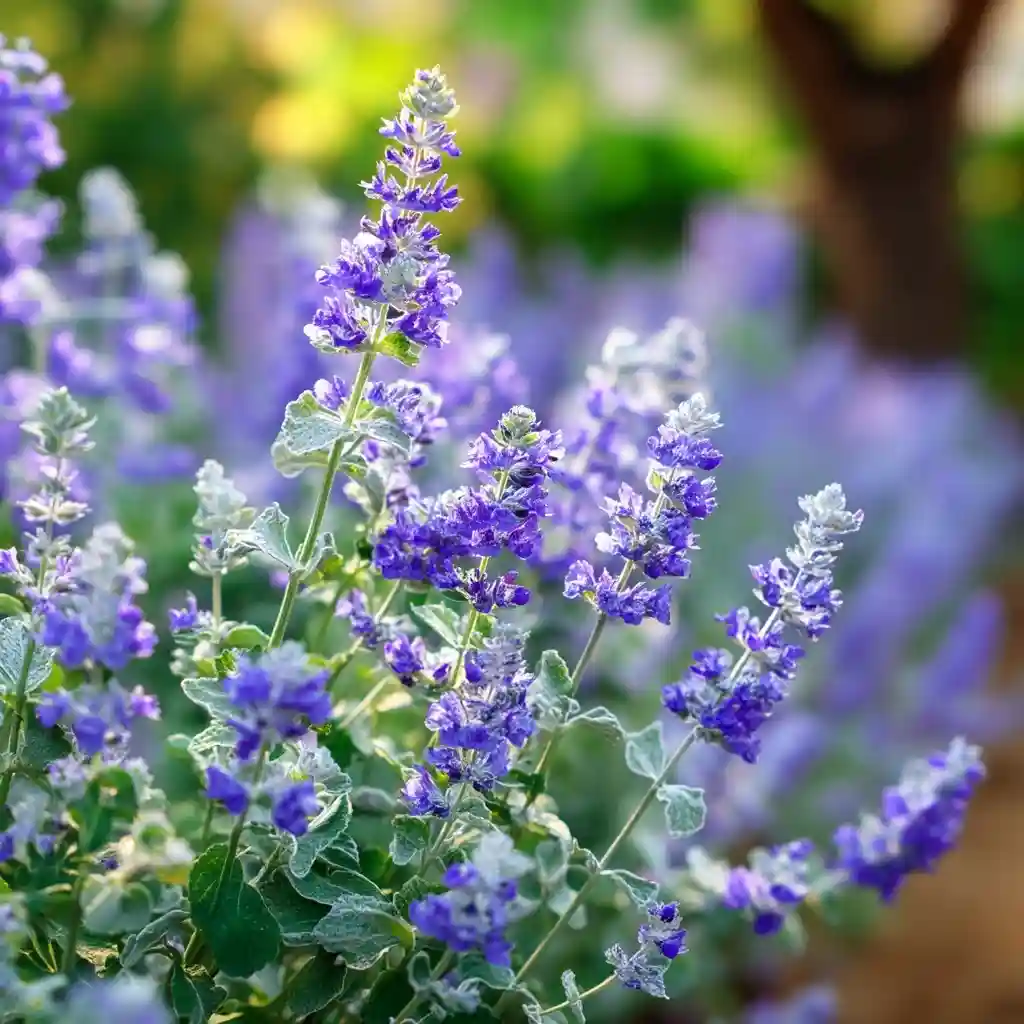
Catmint, often confused with catnip, is a hardy perennial that’s surprisingly effective at repelling mosquitoes. Its natural compounds, especially nepetalactone, have been shown in studies to be even more potent than DEET in warding off mosquitoes—making it one of the most underrated mosquito repellent plants.
This member of the mint family produces silvery foliage and soft purple-blue flowers that bloom from early summer to fall. It’s a pollinator magnet, attracting bees and butterflies, while keeping unwanted insects at bay.
Catmint is low-maintenance, drought-tolerant, and thrives in full sun. However, it can spread quickly if not kept in check, so consider planting it in containers or using edging to prevent it from overtaking your garden beds.
Add it to borders or near patios to enjoy its pest-fighting power along with its calming scent and cottage-garden charm.
5. Rosemary

Rosemary isn’t just for cooking—it’s also a powerful member of the mosquito repellent plants family. Its woody fragrance contains oils like cineole and camphor, which mosquitoes find overwhelming and unpleasant. That makes rosemary a smart addition to gardens where you want to enjoy the outdoors without constant swatting.
This perennial herb loves full sun and well-drained soil, thriving in warm, dry climates. In colder regions, it does well in containers that can be brought indoors during winter. Rosemary can be trimmed into hedges, shaped topiaries, or left to sprawl naturally in garden beds.
Besides deterring mosquitoes, rosemary also helps repel cabbage moths and carrot flies, making it useful in edible gardens. Keep a few sprigs near your grill or fire pit—tossing rosemary stems onto the flames adds aroma and enhances the insect-repelling effect.
6. Basil
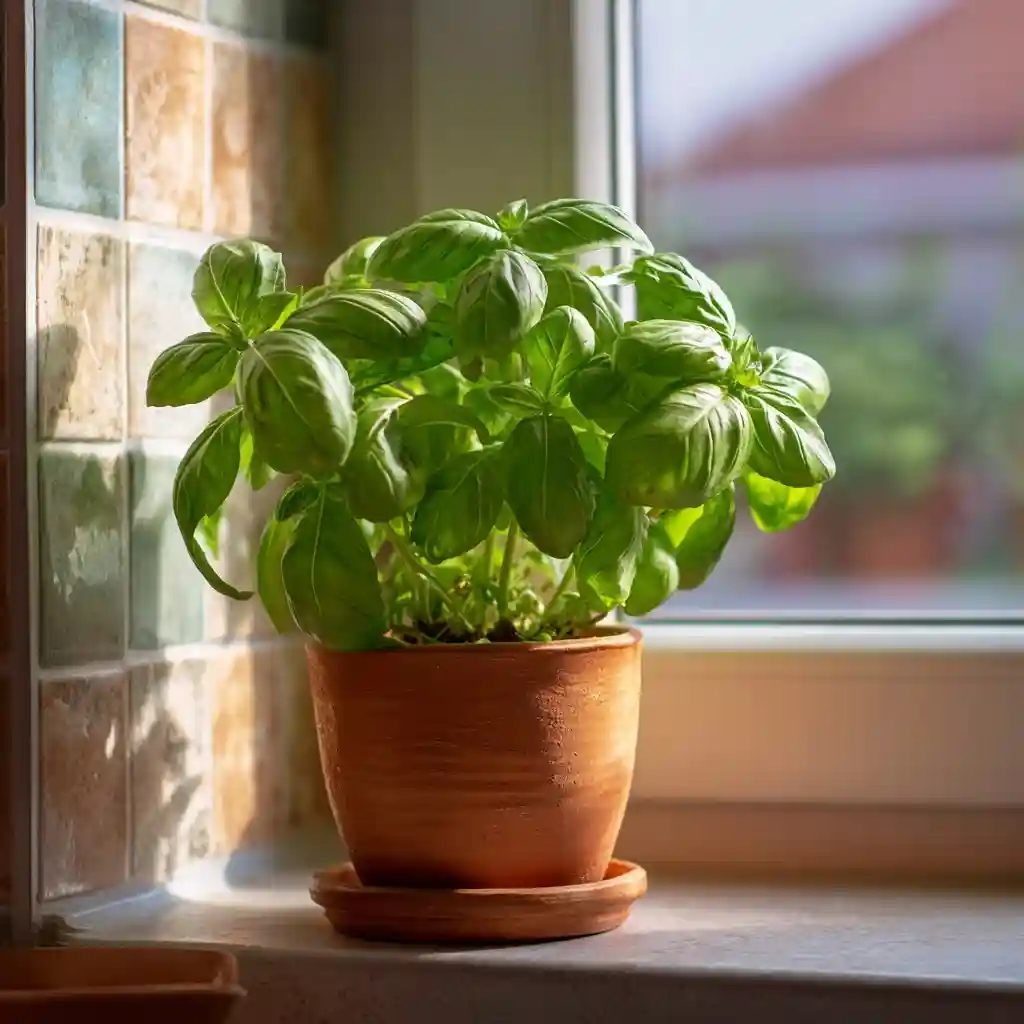
Basil pulls double duty in the garden—flavoring your meals while keeping mosquitoes away. Its strong, clove-like aroma is what makes it one of the most practical and aromatic mosquito repellent plants. The oils in basil leaves, especially eugenol, are known to disrupt a mosquito’s sense of smell.
This herb loves warm weather, moist soil, and full sun. While it’s commonly grown as an annual, basil thrives in containers, raised beds, or alongside vegetables that benefit from its pest-repelling properties. Keep it near your kitchen or outdoor seating area for easy access and better bug control.
Best of all, every part of the basil plant helps: leaves, flowers, and stems all contribute to its mosquito-repelling power. Plus, having it close by means you can grab a few leaves anytime for your favorite summer dishes.
7. Citronella / Scented Geranium
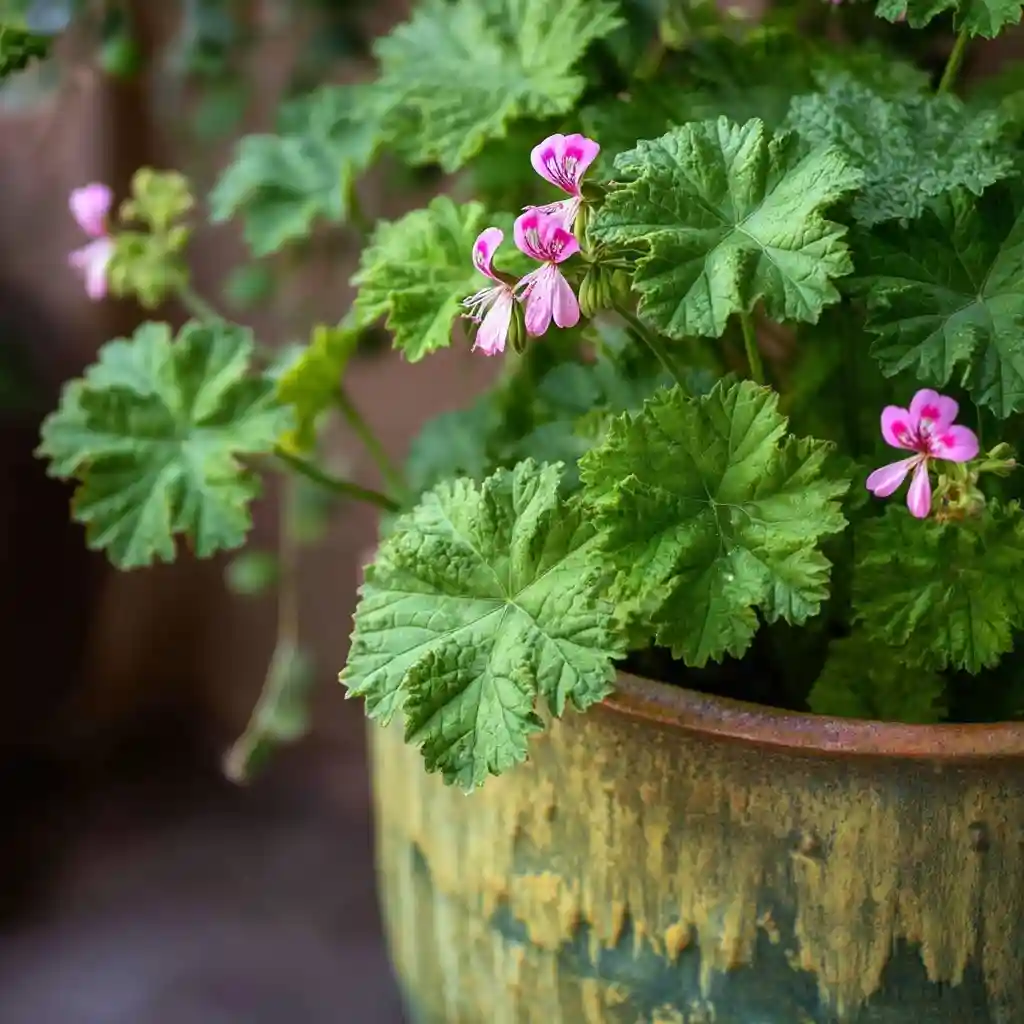
Scented geraniums, especially those with a lemony aroma, are classic mosquito repellent plants often labeled as “mosquito plants” at garden centers. Their fragrant leaves contain citronellol and geraniol—natural compounds that mosquitoes find overwhelming.
These fast-growing annuals thrive in full sun and warm weather, making them perfect for containers, hanging baskets, or flower beds near patios. In cooler climates, they can be grown in pots and overwintered indoors with proper care and pruning.
To boost their repellent effect, crush the leaves gently with your fingers to release their natural oils. While they’re busy repelling pests, you’ll enjoy textured foliage and small, colorful blooms that make a cheerful addition to any outdoor space.
8. Bee Balm (Monarda)

Bee balm, also known as Monarda or horsemint, is a beautiful flowering herb that not only attracts pollinators but also works as one of the most striking mosquito repellent plants you can grow. Its aromatic leaves release thymol and other natural oils that mosquitoes dislike, especially when the foliage is gently crushed.
This perennial thrives in full sun and moist, well-drained soil. It blooms in midsummer with vibrant flowers in shades of red, pink, lavender, and white—making it a standout addition to cottage gardens or pollinator beds.
Bee balm is perfect for gardeners looking to welcome bees and butterflies while keeping biting insects at bay. It’s also a great companion plant in herb gardens, adding height, fragrance, and color all season long.
9. Mint
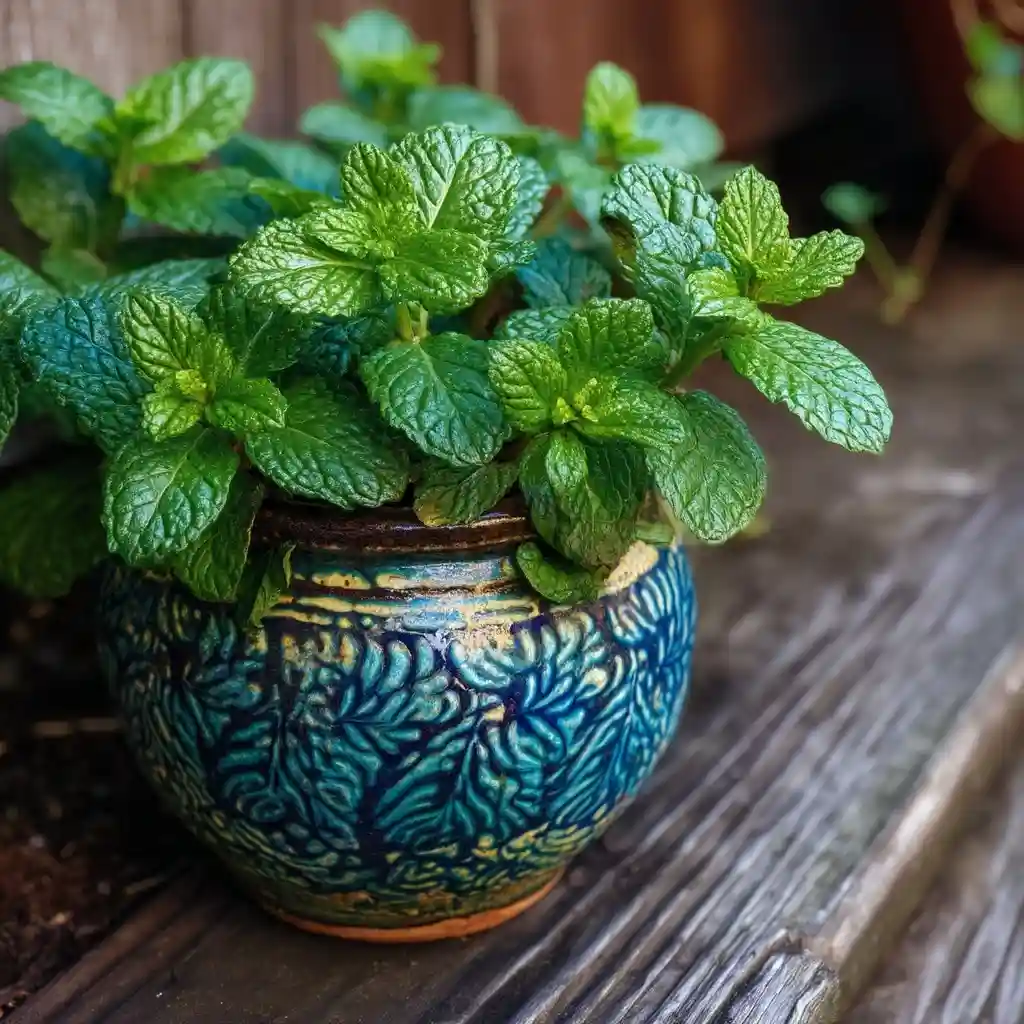
Mint is one of the most versatile mosquito repellent plants, offering a fresh, sharp scent that mosquitoes and other pests instinctively avoid. Its high menthol content overwhelms their sensory receptors, helping to create a bug-free zone around your garden or patio.
This perennial herb thrives in partial to full sun and prefers moist, well-drained soil. But be careful—mint spreads aggressively and can quickly take over garden beds. To control its growth, plant it in containers or use root barriers if placing it in the ground.
Besides repelling mosquitoes, mint is great for repelling ants and flies. You can harvest the leaves fresh or dried for teas, homemade sprays, or even to place in sachets indoors as natural pest control.
10. Floss Flower (Ageratum)
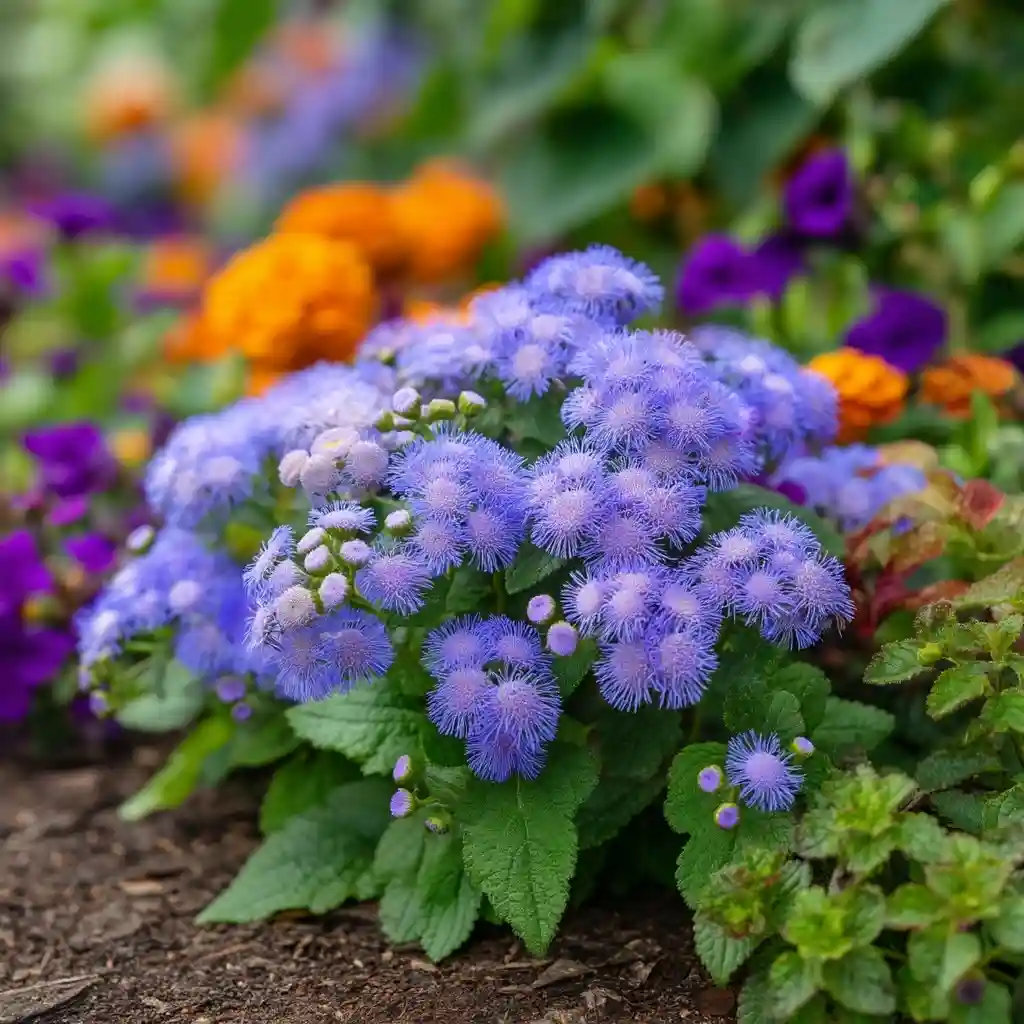
Floss flower, or Ageratum, is a compact annual with fluffy, lavender-blue blooms—and it’s more than just a pretty face. This ornamental favorite contains coumarin, a natural compound that makes it one of the lesser-known but effective mosquito repellent plants.
It’s ideal for flower beds, borders, or container gardens, especially in areas where mosquitoes tend to linger. The plant prefers full sun but can tolerate partial shade and grows best in fertile, well-drained soil.
Floss flower blooms continuously from planting through the first hard frost, providing long-lasting color and gentle pest control. Just be mindful that while it deters bugs, it’s mildly toxic if ingested, so place it thoughtfully if you have pets or small children.
11. Sage
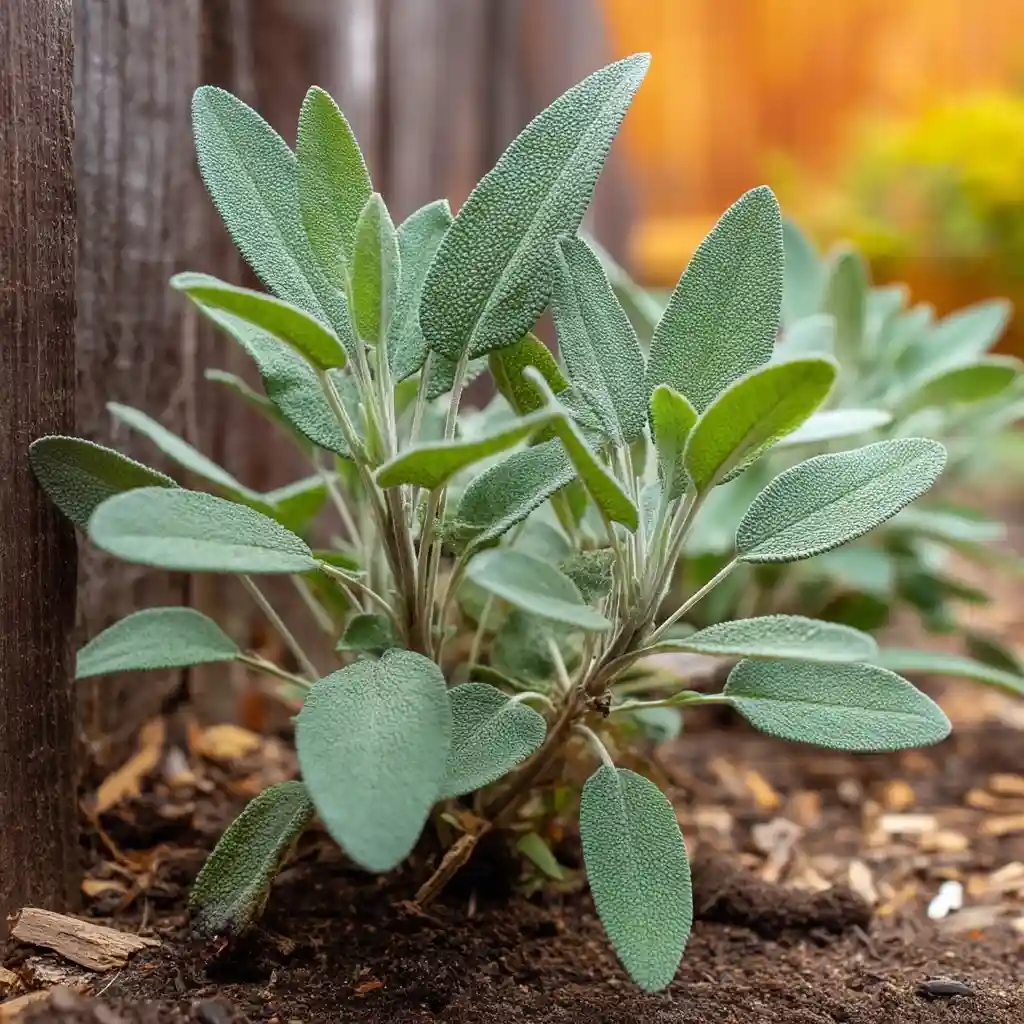
Sage isn’t just a culinary staple—it’s also a powerhouse among mosquito repellent plants. Its earthy, aromatic leaves produce natural oils like thujone and camphor that mosquitoes dislike. Even better, burning sage leaves in a backyard fire pit can intensify its insect-repelling effects.
This hardy perennial thrives in full sun and well-drained soil. It’s drought-tolerant and low-maintenance, making it a great addition to herb gardens, raised beds, or decorative planters. Sage pairs well with other Mediterranean herbs like rosemary and thyme, both visually and functionally.
To use sage as a mosquito deterrent, crush fresh leaves or add dried ones to DIY sprays. You can also tie a small bundle, dry it, and burn it safely like incense during summer evenings outdoors.
12. Allium
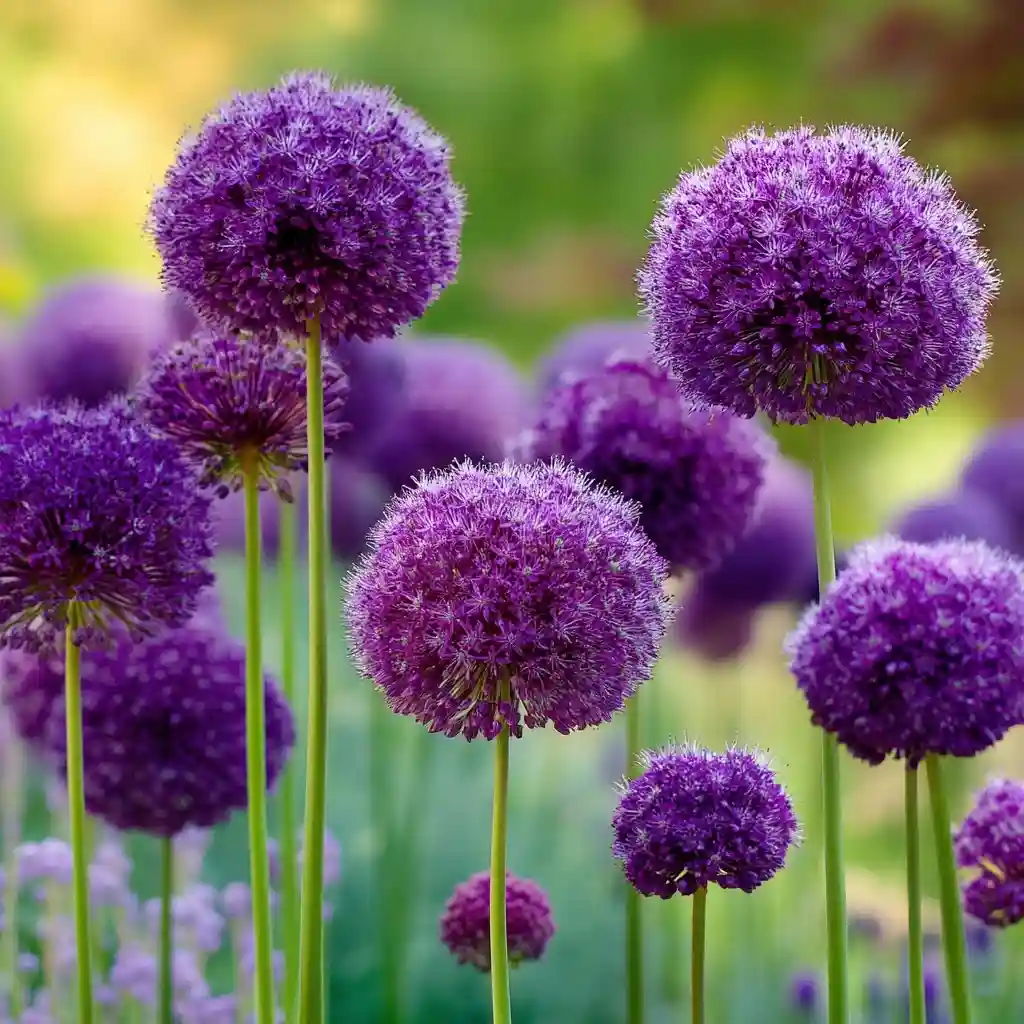
Allium, a genus that includes garlic, onions, and ornamental varieties, is one of the most effective mosquito repellent plants you can grow. Its strong sulfur-rich scent—especially from garlic bulbs—creates a natural barrier that mosquitoes tend to avoid.
These hardy perennials are easy to grow in full sun and well-drained soil. The ornamental types produce striking, globe-shaped flowers that sit atop tall, slender stems, adding architectural interest to borders and flower beds. Many bloom in late spring to early summer and are excellent for cutting gardens.
Beyond mosquito control, alliums also help deter aphids, slugs, and even deer. They’re a great companion plant in vegetable gardens and blend beautifully with other insect-repelling herbs and flowers.
Conclusion
Incorporating mosquito repellent plants into your garden is a smart, natural way to enjoy the outdoors without constantly battling biting insects. From fragrant herbs like rosemary and basil to eye-catching flowers like marigolds and bee balm, each plant on this list offers unique benefits for both pest control and garden beauty.
By strategically placing these plants near patios, walkways, and entryways, you can create an inviting outdoor space that’s both beautiful and bug-free. Plus, many of these plants pull double duty—repelling pests while attracting pollinators and offering culinary or ornamental value.
Whether you’re building a backyard retreat or just adding a few pots to your balcony, these plants help keep mosquitoes at bay the natural way.
🧾 Frequently Asked Questions (FAQ)
❓What are the best mosquito repellent plants for patios?
Some of the best mosquito repellent plants for patios include citronella grass, lavender, mint, and basil. These thrive in containers and give off strong scents that help keep mosquitoes away when placed near seating areas or doorways.
❓Do mosquito repellent plants really work?
Yes, many mosquito repellent plants produce natural oils and scents that deter mosquitoes. While they may not eliminate all pests, they’re highly effective when used alongside good mosquito control practices like removing standing water.
❓How many mosquito repellent plants do I need?
It depends on the size of your space. For a small patio or balcony, 3–5 potted plants (such as basil, mint, or rosemary) can offer noticeable protection. In larger gardens, interplanting several varieties throughout key areas works best.
❓Can I grow mosquito repellent plants indoors?
Some mosquito repellent plants like basil, mint, and rosemary can be grown indoors in bright, sunny spots. Just make sure they get enough light and are placed near windows or doors where mosquitoes might enter.
❓Which mosquito repellent plants are safe for pets?
Pet-safe options include rosemary, basil, and bee balm. Avoid plants like citronella and certain types of geraniums, which can be mildly toxic to cats and dogs if ingested. Always check for pet safety when choosing plants.
❓Do I need to crush the leaves for the plants to repel mosquitoes?
Crushing or brushing the leaves can release more of the plant’s natural oils, making their mosquito-repelling properties stronger. For plants like catmint, mint, and bee balm, this is especially effective.
🌿 Love gardening inspiration? Follow me on Pinterest for bold plant ideas, tips, and seasonal color!


